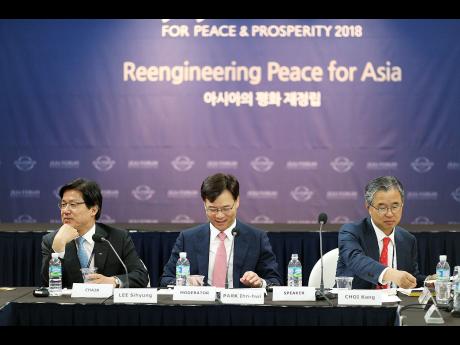South Korea's 'Miracle on the Han River' - 'Backwater' state's turnaround provides hope of economic recovery for Jamaica
For more than three decades, Jamaica's political and business leaders have been trying, with mixed results, to get the country's economic affairs on a strong footing. After years of devaluation of the local currency as well as internal and external financial shocks, finding the road to prosperity is an elusive endeavour.
But Singapore and South Korea provide Jamaica with ample examples of how to pull itself out of the economic quagmire. Recently, South Korea's economic miracle was addressed at a forum in that country that looked at prosperity, peace, and a common outlook for the Korean peninsula, and where its history as a 'poor country' after the Korean War was assessed for future reference.
After hostilities ceased with the signing of the armistice in 1953, South Korea remained one of the poorest countries in the world for more than a decade. In 1960, its gross domestic product per capita was US$79, lower than that of some sub-Saharan countries.
Today, the economy of South Korea is the fourth largest in Asia and the 11th largest in the world. It is a mixed economy, dominated by family-owned conglomerates called chaebols. The country is famous for its spectacular rise from one of the poorest countries in the world to a developed, high-income country in just one generation. The growth of the industrial sector was the principal stimulus to economic development.
This economic miracle, commonly known as the Miracle on the Han River, brought South Korea among the ranks of elite countries in the Organisation for Economic Cooperation and Development as well as the G-20.
GREAT SACRIFICE
South Korea remains one of the fastest-growing developed countries in the world since the Great Recession of 2008 and ensuing years. The country is included in the group of Next Eleven countries that are anticipated to dominate the global economy in the middle of the 21st century.
"Small developing countries can learn from Korea, and Singapore's experience that it takes a sacrifice of national importance to turn things around," said Korea Foundation President Lee Sihyung during a session with international journalists.
Likewise, the South Korean Ambassador to Jamaica, Young Gyu Lee, has said that similarities between both countries exist, pointing out that Korea was seen as the backwater state of Asia but suggesting that its economic rise can be duplicated in the Jamaican context.
"This can be achieved with a oneness of purpose and strong will to succeed and be independent. I think, however, that Jamaica is on its way to being prosperous again," he told The Gleaner.




